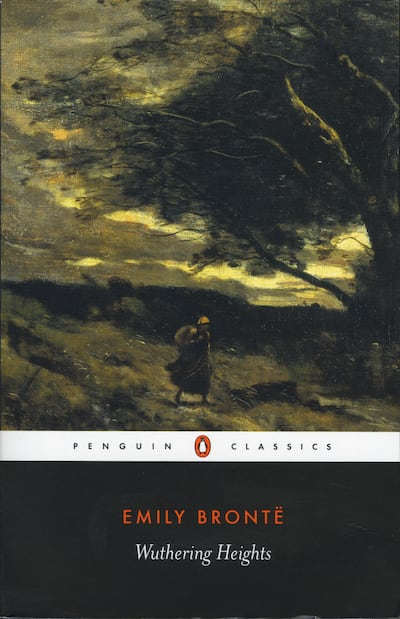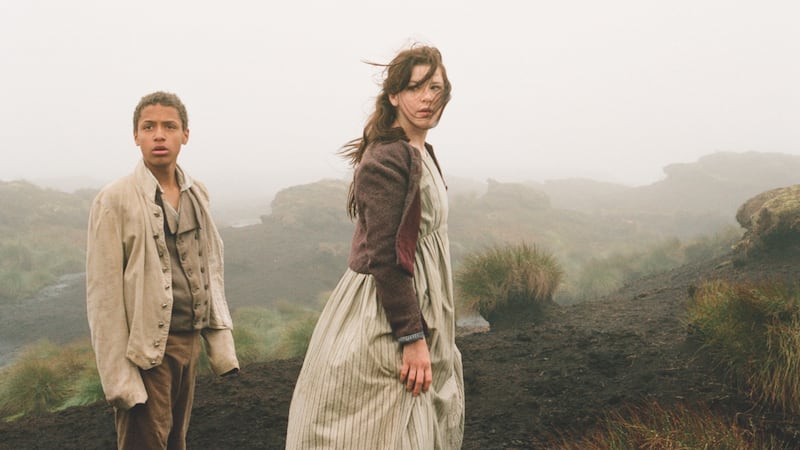Wuthering Heights is a cult classic, an incredibly significant piece of literature that challenged the social and moral structures of Victorian society, possessing characters and commentaries decades ahead of the novel's time. First published in 1847 under the pseudonym "Ellis Bell", the posthumous second edition that emerged in 1850 was attributed to the novel's true author, Emily Brontë.
Emily chose to write under a pseudonym in an effort to avoid publicity, as well as give her novel a chance of fair critical reception at a time when female authors weren’t taken seriously. Justification for her decision can be found in the fact that many commentators would eventually go on to express doubt that she, as a woman, could have penned such a dark and savage story.

Constructions of femininity as docile and uncritical were so pervasive within Victorian society, that by 1867 Emily’s authorship of the novel was already being publicly questioned. Most people have heard of the prolific Brontë sisters-Anne, Charlotte, and Emily-but there was a fourth, lesser known sibling who also tried their hand at writing: their brother, Branwell.
While critics remain somewhat undecided on his talent as an author, what is certain is that the accomplishments of Branwell's literary career are not at all comparable to those of his sisters. He only produced a few poems and an unfinished novel called and the weary are at rest, struggling with alcoholism and addiction for most of his adult life. But, in the wake of Branwell's death in 1848, two of his friends, William Deardon and Francis Grundy, began circulating the rumour that it was in fact he and not Emily who had written Wuthering Heights. As recounted by Irene Cooper Willis, an anonymous article appeared in People's Magazine in 1867 claiming that Emily, as "a timid and retiring female", could not have written so coarse a novel.
Not long after, Deardon, under the pseudonym William Oakendale, published a letter in the Halifax Guardian, supporting the anonymous magazine article. Deardon claimed to recognise similarities between Emily’s novel and work which Branwell had shown him while still alive. Believing a woman incapable of writing Wuthering Heights, Branwell’s friends now suggested that the novel must have been written, or at least co-authored, by Emily’s brother.

The vast majority of critics have dismissed such rumours for what they are, unfounded and, quite frankly, sexist. That Emily was an outwardly unassuming woman tells us nothing of her literary imagination. But despite the consensus among most experts and scholars, a sometimes-vocal minority of amateur critics and enthusiasts continue to question if Emily did in fact write Wuthering Heights. In 2014, Chris Firth, having previously self-published a novel which disputes Emily's authorship of Wuthering Heights, was quoted by David Knights in an article for Keighley News, stating his beliefs that Branwell is the famous title's true author. Firth presents quite the conspiracy, stating how he suspects that, "for reasons unknown, Emily's straight-laced sister Charlotte demonised Branwell and obscured his input to the creative success of the Bronte family". Firth also indicates that he is looking forward to scholars using computational methods designed for authorship attribution-what those in the digital humanities call "stylometry"-to prove his hypothesis.
That is precisely what our recent study, published in Digital Scholarship in the Humanities (Oxford University Press), sets out to accomplish. Armed with stylometry we ask, who wrote Wuthering Heights? Stylometry is based on a simple premise: by counting the frequency of words in a text, you can form a profile of how an author writes, and then use that quantitative measure to forensically test things like authorship, influence, genre, or anything that might be related to how something is written. Using individual writing samples and some very clever tools developed by the Computational Stylistics Group, we algorithmically formed quantitative authorial fingerprints for each of the Brontë siblings, and then used those signatures to conduct a stylometric analysis of Wuthering Heights to see, statistically speaking, who is the novel's most likely author. The same technique has been used to do authorship attribution tests of works by major literary figures like James Patterson, JK Rowling and Harper Lee.
You might be unsurprised to learn that there is no mystery to who really wrote Wuthering Heights - our analysis shows that it is most likely Emily. There are some limitations to the dataset that are discussed in the paper, but Firth’s 2014 assertion that computer-assisted methods would soon expose the duplicitousness of Emily and her sister Charlotte, supposedly capable of plagiarising their own brother, is complete nonsense. If anything, our results show that Branwell is the least likely member of the Brontë family to have contributed to Wuthering Heights.
Of course, it is not just Firth who has propagated such nonsensical rumours, and if one looks hard enough, they will find treatments which agree with Firth's position, as well as others who suggest that Charlotte wrote the novel. There are some indications in our results that Charlotte did influence Emily's writing, but this is unsurprising considering the Brontës formed something of a creative collaboration throughout their formative years (see Butcher, Braxton, or Malfait and Demoor if you want to learn more about this particular matter).
In 2004, the late Robert Barnard, former Chairman of the Bronte Society, called for an end to the baseless conspiracies around Wuthering Heights which have persisted for far too long. It is our hope that this computer-assisted study, which uses the quantitative analysis of style to assess the authorship of Wuthering Heights, might be the last word on this matter. Individuals and publications who continue to feed unfounded, sensationalist rumours should be held accountable for the drivel they are peddling. At the very least they are spreading misinformation about an important cultural work; at the worst they are reviving those Victorian sentiments that forced Emily to first publish under a male pseudonym. The computers agree with 99 per cent of literary scholars and experts: Emily Brontë wrote Wuthering Heights.
Rachel McCarthy is an undergraduate student at University College Cork where she is studying Digital Humanities and Information Technology. She has interests in text analysis and creative writing.
Dr James O'Sullivan (@jamescosullivan) lectures in the Department of Digital Humanities at University College Cork. His scholarship has appeared in a variety of international publications. See jamesosullivan.org for more on his work.











